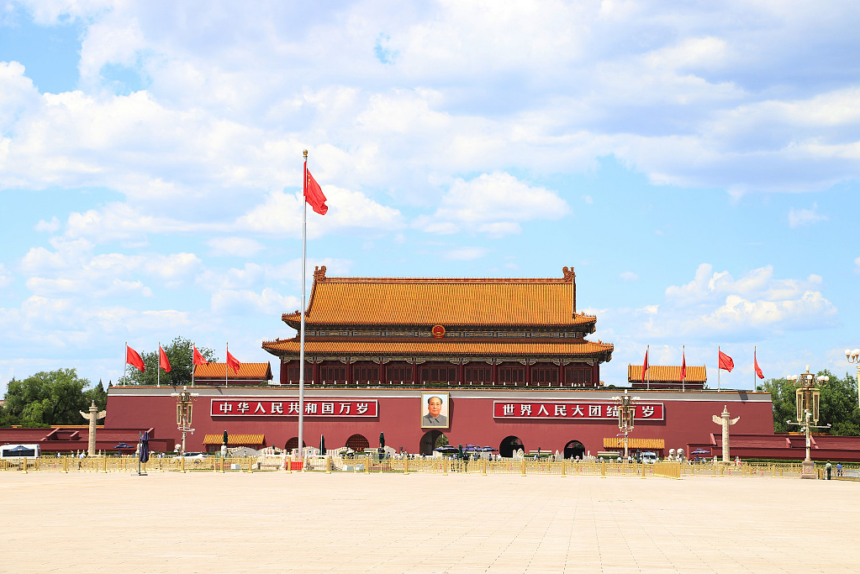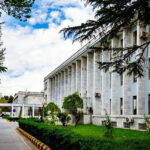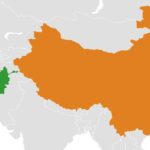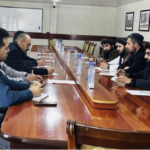If you were to describe Afghanistan with a color, which would you choose? Maybe red, the color of saffron. Or beige, for the fine cashmere.
I have decided on a tranquil blue. The idea came to me after watching a popular Chinese dance drama,in which the costumes are in a beautiful hue of blue.
There is some interesting history to the special hue. The dance drama is a reproduction of a Chinese masterpiece painted almost 1,000 years ago—in different shades of blue. Its pigment came from a precious stone found in Afghanistan, the lapis lazuli.
Animating great Chinese art, paint made from the gem can be found on the ribbons of Buddhist deities depicted in ancient caves, on the beaded necklaces Chinese emperors wore on the solemnest occasions, and on Chinese laquerware and silk carried through Begram along the ancient Silk Road.
Interestingly, blue is also seen in our close ties today.
There stands the blue Mirwais regional hospital. The Chinese government helped to build it in the 1970s. Named after a former Afghan ruler, it is also known as “Chinayano Shafakhana” (“Chinese Hospital”) in Pashto. For millions of Afghans in Kandahar and nearby areas, it remains the largest and best equipped hospital.
When I was visiting China’s annual International Import Expo, I found blue in handmade Afghan rugs, which were sold out immediately after their first appearance in 2018 and were ordered in the thousands.
Blue was also in the fine bowls presenting Afghan pine nuts at the Expo. The nuts are extremely popular among Chinese consumers. In a single livestreaming session to sell the nuts, 26 tons were snapped up in two hours—1,000 cans per minute. As they place orders, Chinese shoppers left comments like: “A can of pine nuts to help the Afghans,” “I’m buying this to support the Afghan people,” and “Afghan farmers are having a hard time and we must help them.”
Now, these little gifts of nature are flying to China every year in thousands of tons—on their own chartered planes. A Chinese company is investing millions of US dollars to build a processing plant in Kabul, keeping more value added for the locals.
Other examples abound. In blue overalls, Chinese engineers and workers toiled hard to build the Jalalabad Highway and Kabul’s Jamhuriat Hospital. In blue packaging, Chinese relief arrived in Herat soon after a huge earthquake struck. Tents, foldable beds, thick blankets and clothes worth millions of dollars were airlifted there just as they were most needed.
A tour guide for China’s Dunhuang Caves on the Silk Road told me the blue made from lapis lazuli does not fade with time. I find that quite symbolic. Isn’t it just like the time-tested bonds between China and Afghanistan?
(Wen Ying is a freelance writer based in Beijing.)













